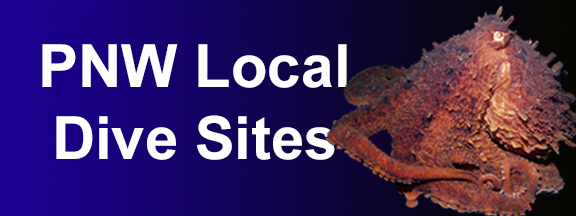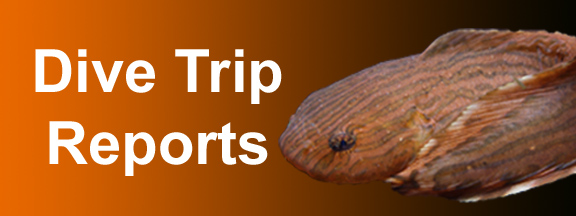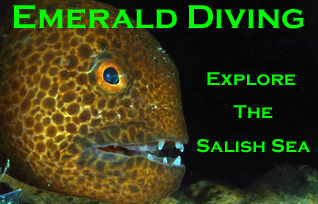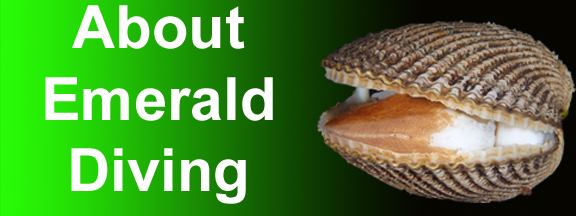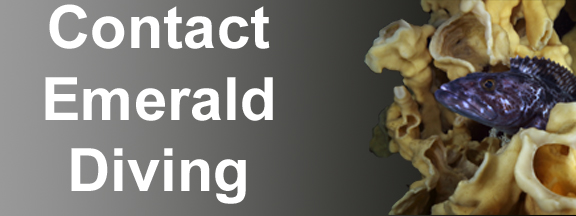

Puget Sound & Hood Canal
The last of receding mile-high glaciers left an extensive network of deep scars between the Cascade and Olympic Mountains approximately 13,000 years ago. Some of these scars formed Puget Sound and Hood Canal. Today, Puget Sound boasts depths of over 900 feet, while fjord-like Hood Canal achieves depths of almost 600 feet. Both bodies of water offer excellent and unique diving opportunities.
The last of receding mile-high glaciers left an extensive network of deep scars between the Cascade and Olympic Mountains approximately 13,000 years ago. Some of these scars formed Puget Sound and Hood Canal. Today, Puget Sound boasts depths of over 900 feet, while fjord-like Hood Canal achieves depths of almost 600 feet. Both bodies of water offer excellent and unique diving opportunities.
Puget Sound in particular offers divers an enormous amount of variety and convenience. The Puget Sound dive site menu includes natural reefs, made-made reefs, clay walls, sandstone walls, rock walls, boulder piles, rubble piles, sand flats, steel wrecks, and wooden wrecks. Some of the sites offer excellent off-slack dives or are accessible by shore. Divers are often just a short drive away from any needed supplies as much of the Puget Sound shoreline is populated with urban centers.
Visibility varies greatly in Puget Sound, but tends to peak in fall months and bottom out in late spring. Visibility sometimes exceeds 50 feet in the late summer and early fall. Run-off from rivers, plankton blooms, heavy rains, and strong winds can drop visibility to 7 feet or less in the spring. Visibility in Puget Sound normally ranges between 15-25 feet.
Hood Canal also offers interesting recreational diving opportunities, although less diverse. The Hood Canal dive sites listed in this guide consist of hard rock formations situated on silty substrates. There are several unique attributes related to Hood Canal diving.
First, the underwater seascape throughout Hood Canal is blanketed by thick brownish-gray silt. The daily tidal water exchange in Hood Canal is substantially limited because of the restricted entrance to this 80 mile long body of water. Silt from rivers that feed into Hood Canal has nowhere to go and settles in the canal.
This lack of water exchange also means that tidal currents are less intensive in the mid and lower sections of the canal. I often plan to dive Hood Canal at times when exchanges are relatively heavy and cannot dive other current-sensitive areas.
Another side-effect of the restricted water movement in the canal is a persistent fresh water layer. Fresh water run-off from surrounding rivers is captured in the canal and slowly works its way north out of the canal. The less dense fresh water rides on top of the heavier salt water and is often plagued by extremely poor visibility, especially in spring. This fresh water is typically relegated to the top 5 to 15 feet of the water column and can reach 70ºF degrees in late summer and early fall.
Visibility varies greatly in Puget Sound, but tends to peak in fall months and bottom out in late spring. Visibility sometimes exceeds 50 feet in the late summer and early fall. Run-off from rivers, plankton blooms, heavy rains, and strong winds can drop visibility to 7 feet or less in the spring. Visibility in Puget Sound normally ranges between 15-25 feet.
Hood Canal also offers interesting recreational diving opportunities, although less diverse. The Hood Canal dive sites listed in this guide consist of hard rock formations situated on silty substrates. There are several unique attributes related to Hood Canal diving.
First, the underwater seascape throughout Hood Canal is blanketed by thick brownish-gray silt. The daily tidal water exchange in Hood Canal is substantially limited because of the restricted entrance to this 80 mile long body of water. Silt from rivers that feed into Hood Canal has nowhere to go and settles in the canal.
This lack of water exchange also means that tidal currents are less intensive in the mid and lower sections of the canal. I often plan to dive Hood Canal at times when exchanges are relatively heavy and cannot dive other current-sensitive areas.
Another side-effect of the restricted water movement in the canal is a persistent fresh water layer. Fresh water run-off from surrounding rivers is captured in the canal and slowly works its way north out of the canal. The less dense fresh water rides on top of the heavier salt water and is often plagued by extremely poor visibility, especially in spring. This fresh water is typically relegated to the top 5 to 15 feet of the water column and can reach 70ºF degrees in late summer and early fall.
Click on a dive site name on the map to view the dive profile.

Local Sites
Local Sites
Local Site Maps




